Saint Kitts & Nevis is home to an impressive variety of native birds. With over 120 species of birds inhabiting the two islands, birdwatchers have the opportunity to observe a diverse array of species.
From the colorful parrots and hummingbirds to the majestic hawks and pelicans, the birds of Saint Kitts & Nevis provide visitors with thrilling visual displays.
Whether birdwatching in the rainforests and mangroves of the islands or along the beaches, visitors can take in the beauty of the diverse bird species that call Saint Kitts & Nevis home.
1. Tyrant Flycatchers
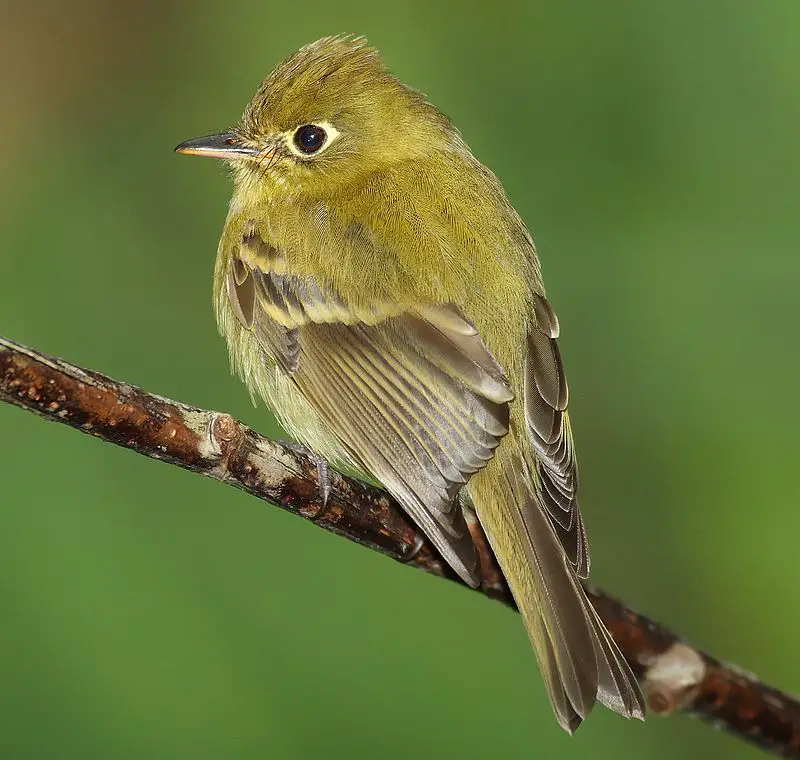
Tyrant flycatchers are a family of birds found in North and South America, containing over 400 species. These birds come in an array of shapes and sizes, with vibrant plumage to match.
They�re the most diverse avian family across all countries they inhabit except for the United States and Canada.
Their diet consists mainly of insects but also includes small reptiles or amphibians where available.
The behavior varies between each bird; some prefer open areas while others like dense forests as their habitat � many even migrate regularly.
Tyrant Flycatchers have adapted well to human presence thanks to the abundance of food sources that often accompany it � such as backyards, parks etc..
All things considered these incredible creatures are truly amazing.Scientific classification:
| Kingdom | Animalia |
| Phylum | Chordata |
| Class | Aves |
| Order | Passeriformes |
| Parvorder | Tyrannida |
| Family | Tyrannidae Vigors, 1825 |
2. Mimid
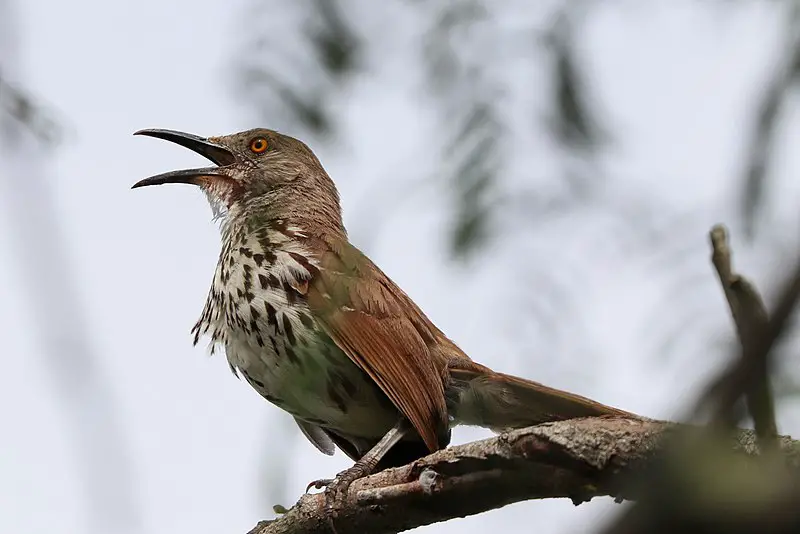
Mimid birds are a diverse family of passerines found in the New World. They have an impressive vocal range and many species excel at mimicking other bird songs, as well as noises from their environment.
Mimids can be identified by their flat heads with short crest feathers, long tails, large eyes and strong legs for hopping between branches.
These birds typically inhabit open woodlands or scrubland areas where they feed on insects such as beetles, caterpillars and grasshoppers.
Some species also supplement their diet with fruits or grains when available. While most do not migrate far during winter months some may undertake longer migrations to warmer climates if necessary to survive cold weather spells.
The wide variety of sounds these talented singers produce make them one of nature’s great musical performers.Scientific classification:
| Kingdom | Animalia |
| Phylum | Chordata |
| Class | Aves |
| Order | Passeriformes |
| Superfamily | Muscicapoidea |
| Family | Mimidae Bonaparte, 1853 |
3. Zenaida Dove
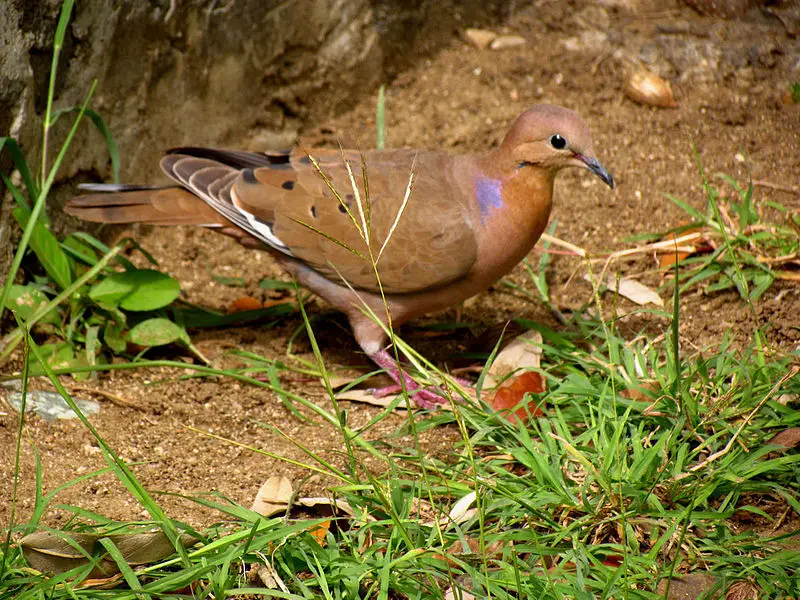
The Zenaida dove is a species of doves and pigeons found mainly in the Caribbean, but also parts of Mexico, Central America and South America.
With its distinct dark coloring, short rounded tail and an average length of 28-30 cm (11-12 inches), it stands out from other bird families.
It’s recognized as the national bird for Anguilla where locals refer to it as ‘turtle dove’. They are seen flying around open grasslands or roosting on tree branches close by populated areas.
These birds feed mostly on seeds that they pick off the ground while walking through fields.
The Zenaida Dove breeds all year round producing two broods during spring and summer months with both male and female taking turns incubating eggs over a span of 14 days before hatching into chicks.Scientific classification:
| Kingdom | Animalia |
| Phylum | Chordata |
| Class | Aves |
| Order | Columbiformes |
| Family | Columbidae |
| Genus | Zenaida |
| Species | Z. aurita |
4. Scaly-Naped Pigeon
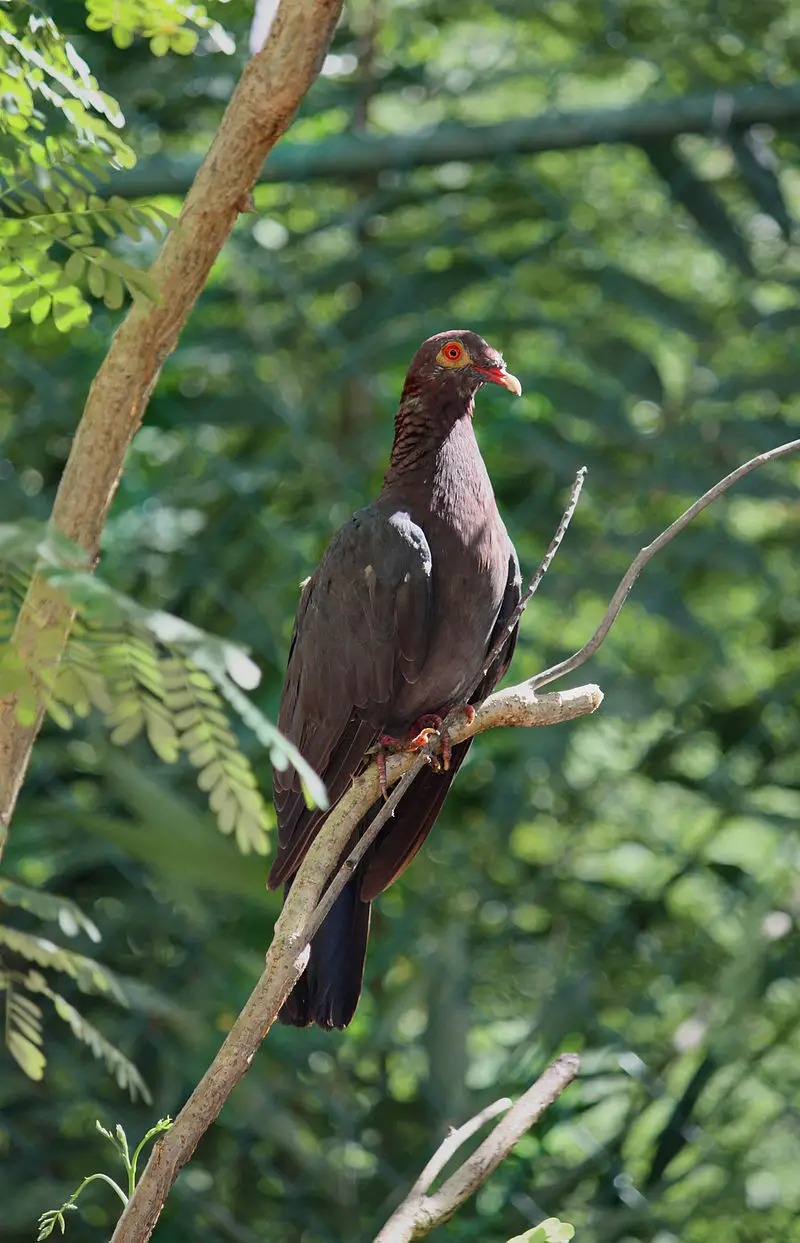
The scaly-naped pigeon is a large bird belonging to the family Columbidae. It has slate grey plumage with maroon coloured feathers around its neck, giving it the common name of red-necked pigeon.
The species originates from throughout the Caribbean and can reach 14–16 inches in length.
Its scientific name is derived from its unique feature: small scales on its nape which form an attractive pattern when viewed up close.
This makes them easily distinguishable from other birds within their range as they are one of few that have this characteristic.
They feed mainly on fruit but also consume seeds, insects and even carrion depending on availability at any given time of year or location.Scientific classification:
| Kingdom | Animalia |
| Phylum | Chordata |
| Class | Aves |
| Order | Columbiformes |
| Family | Columbidae |
| Genus | Patagioenas |
| Species | P. squamosa |
5. Purple-Throated Carib
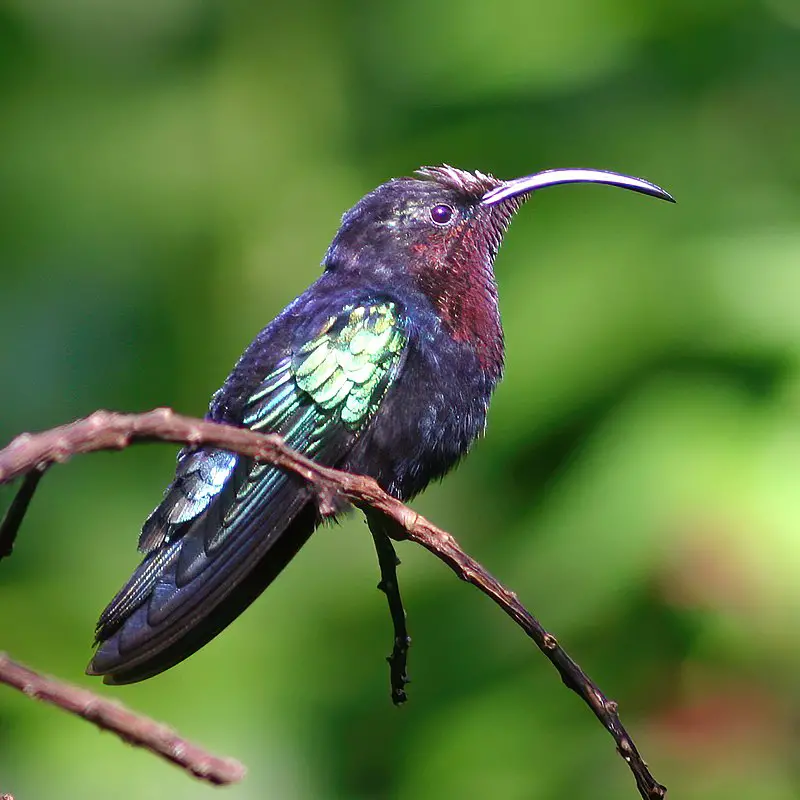
The Purple-throated Carib is a species of hummingbird found in the Lesser Antilles islands. It has stunning purple feathers along its throat, making it quite easy to identify amongst other birds.
This bird is usually seen alone or in pairs and can be found near forests and gardens where they feed on nectar from flowers.
The Purple-throated Carib also feeds on insects which helps keep insect populations under control around their habitat areas.
They are known as strong fliers that have been spotted both north and south of the Caribbean Islands showing just how far this resilient species can travel.
Overall, this vibrant little bird adds beautiful colour to any garden with its mesmerising plumage while providing an essential service at controlling bug numbers too.Scientific classification:
| Kingdom | Animalia |
| Phylum | Chordata |
| Class | Aves |
| Order | Apodiformes |
| Family | Trochilidae |
| Genus | Eulampis |
| Species | E. jugularis |
6. Bridled Quail-Dove
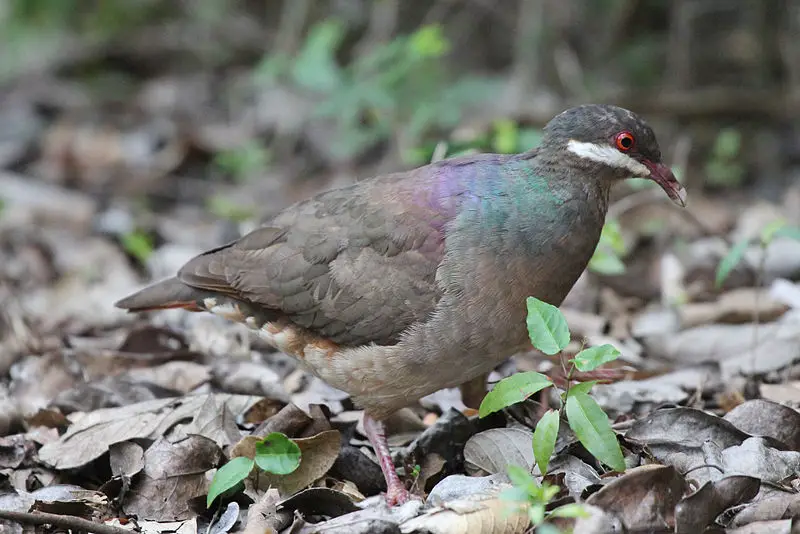
The Bridled Quail-Dove is a species of bird in the Columbidae family, found from Saint Lucia to Puerto Rico. It is monotypic, and it has been suggested that it forms a superspecies with Key West Quail-Doves.
Its mean weight varies between islands; generally being quite small at 93–128 g (3.3–4.5 oz).
They have distinctly barred heads and greyish white underparts with some dark barring on their backs, wings and tails – giving them an overall ‘bridled’ look for which they are named after.
In addition to this striking appearance they make deep cooing sounds whilst perched or hunting for food on the ground – particularly during breeding season when males compete against each other by singing different variations of their call simultaneously.Scientific classification:
| Kingdom | Animalia |
| Phylum | Chordata |
| Class | Aves |
| Order | Columbiformes |
| Family | Columbidae |
| Genus | Geotrygon |
| Species | G. mystacea |
7. Tanagers
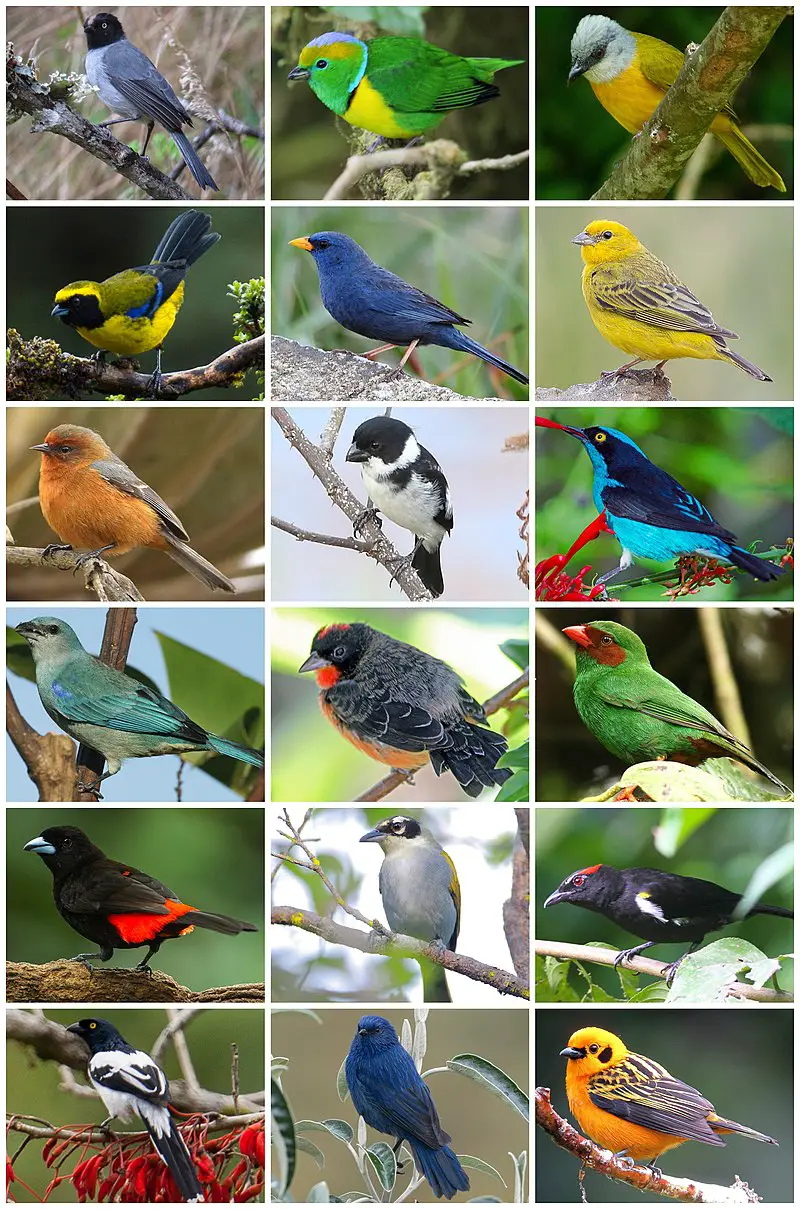
The Tanagers are a beautiful and diverse family of birds native to the Neotropical region. They boast an impressive array of colors, including blues, greens, yellows and reds.
The most common type is the fruit-eating tanager that can be found in tropical forests across Latin America. With nearly 240 species worldwide, they represent almost 4% of all avian species.
These vibrant birds have adapted well to their environment due to their strong bills used for cracking open hard fruits as well as sharp claws for gripping branches while feeding or perching.
As with many other bird families there is natural variation among populations making each one unique in its own way; something that makes them even more special.Scientific classification:
| Kingdom | Animalia |
| Phylum | Chordata |
| Class | Aves |
| Order | Passeriformes |
| Superfamily | Emberizoidea |
| Family | Thraupidae Cabanis, 1847 |
8. Threskiornithidae
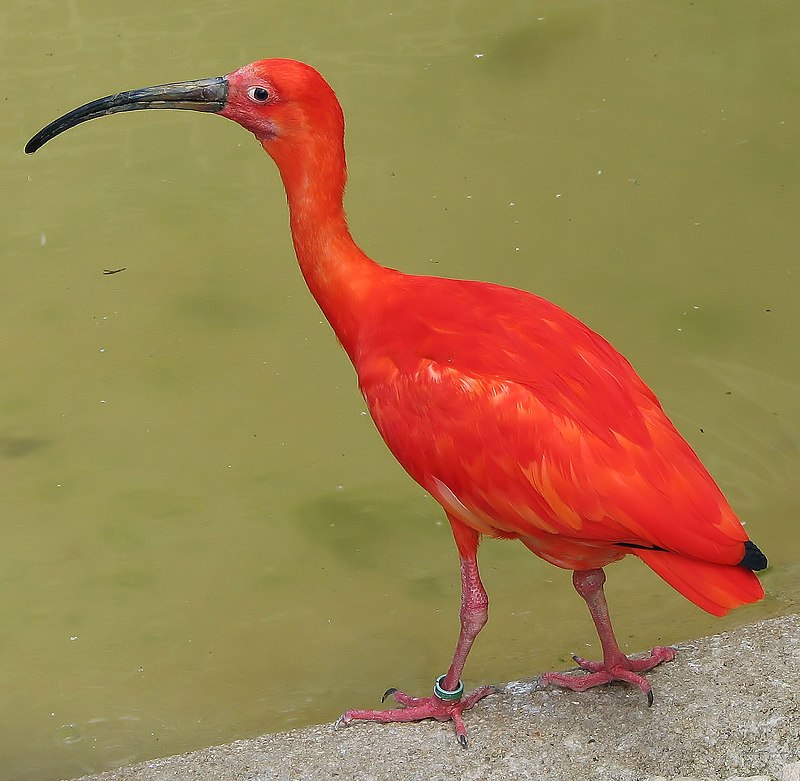
Threskiornithidae is a family of large wading birds which includes 36 species. These birds are traditionally divided into two subfamilies – the ibises and the spoonbills.
However, recent genetic analysis has shown that spoonbills actually belong to Old World ibis group, while New World ibises form an early offshoot from this lineage.
Threskiornithidse members have long curved beaks with serrated edges used for catching fish in shallow water or mudflats, as well as other aquatic invertebrates like crustaceans and mollusks.
They also feed on plant matter such as grains and seeds found close to wetlands areas where they live.
This diverse diet makes them important scavengers in their ecosystems, helping maintain healthy populations of native wildlife by controlling insect numbers and dispersing energy-rich seeds throughout wetland habitats.Scientific classification:
| Kingdom | Animalia |
| Phylum | Chordata |
| Class | Aves |
| Order | Pelecaniformes |
| Suborder | Ardei |
| Family | Threskiornithidae Richmond, 1917 |
9. Brown Trembler
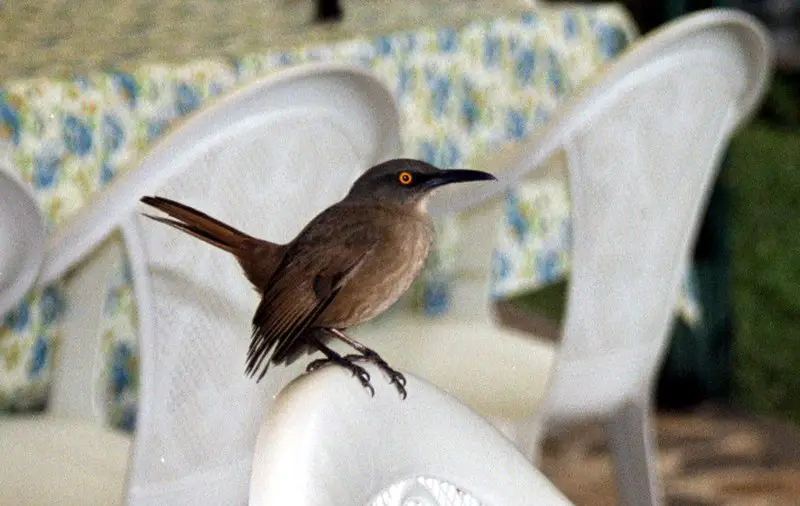
The Brown Trembler (Cinclocerthia Ruficauda) is a species of bird in the Mimidae family, which includes mockingbirds and thrashers. It can be found on seven Caribbean islands: Saba, St.
Kitts, Nevis, Montserrat, Guadeloupe, Dominica and St. Vincent. This bird has an olive-brown back with white underparts and unique tail feathers that quiver when perched or flying low over vegetation – hence its name.
The International Ornithological Committee recognizes nine subspecies due to slight variations between each island population; however further research is needed as some taxonomists believe there are more distinct populations within this species’ range.
Despite limited information about their ecology we do know they primarily feed on fruit from shrubs such as lignum vitae trees while foraging near ground level among tall grasses in open areas like pastures or coastal scrubland habitats.Scientific classification:
| Kingdom | Animalia |
| Phylum | Chordata |
| Class | Aves |
| Order | Passeriformes |
| Family | Mimidae |
| Genus | Cinclocerthia |
| Species | C. ruficauda |
10. Lesser Antillean Bullfinch
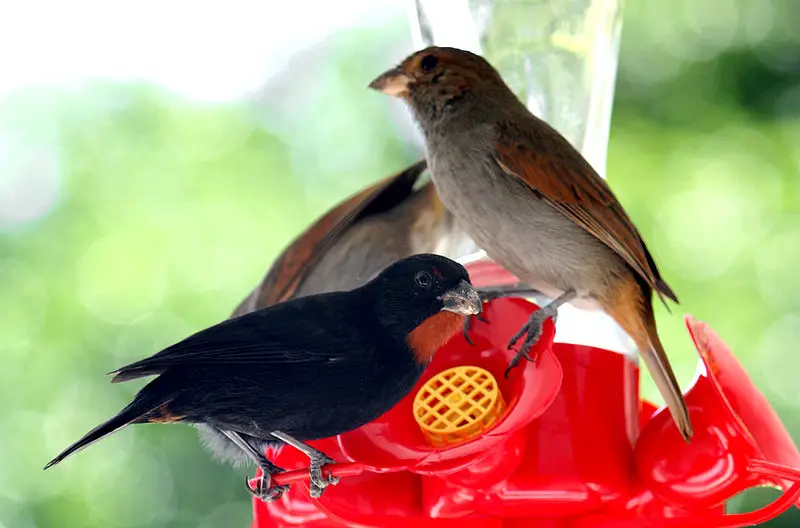
The Lesser Antillean Bullfinch is a species of bird found throughout the Caribbean islands. It has greenish-brown feathers, white cheeks and wings with black spots, and red-orange legs.
Its natural habitats include forests, mangroves and shrublands. This small finch feeds mainly on fruits but also eats insects such as caterpillars and moths in addition to nectar from flowers.
They are often seen foraging near flowering trees during the breeding season when they build nests made out of grasses or plant fibers lined with soft downy feathers for their young ones to rest in comfortably.
These birds have adapted well to human presence so can be easily spotted around gardens within cities where they come looking for food scraps left by people.Scientific classification:
| Kingdom | Animalia |
| Phylum | Chordata |
| Class | Aves |
| Order | Passeriformes |
| Family | Thraupidae |
| Genus | Loxigilla |
| Species | L. noctis |
11. Gray Kingbird
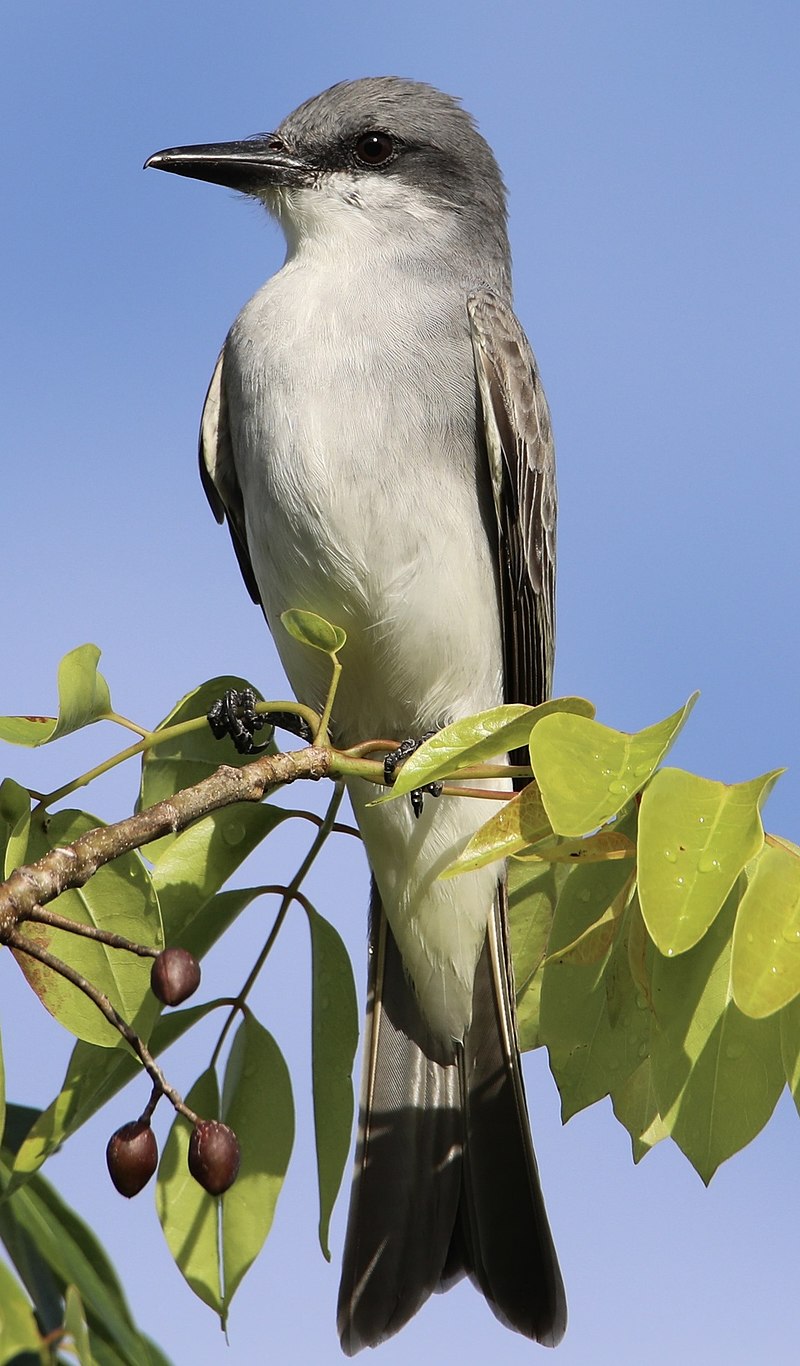
The Gray Kingbird is a species of tyrant flycatcher found in tall trees and shrubs, including the edges of savannas and marshes. It has gray feathers on its back with white underparts and blackish wings.
Its head is dark gray-brown or olive, while its tail is tipped with white. The Gray Kingbird builds flimsy cup nests from twigs in tree branches for their eggs to incubate safely until they hatch into chicks.
They feed mainly on insects such as moths, grasshoppers, beetles, crickets and caterpillars that can be caught midair when it swoops down from above like other kingbirds do.
This bird’s call consists of loud chirps which are often heard during mating season – making them an easily identifiable species within areas where they live.Scientific classification:
| Kingdom | Animalia |
| Phylum | Chordata |
| Class | Aves |
| Order | Passeriformes |
| Family | Tyrannidae |
| Genus | Tyrannus |
| Species | T. dominicensis |
12. Pearly-Eyed Thrasher
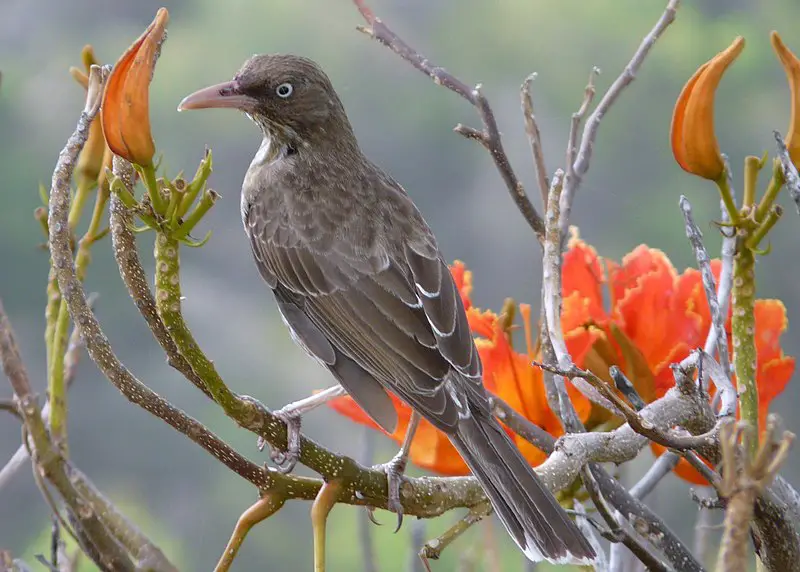
The Pearly-eyed Thrush is a unique and beautiful bird native to the Caribbean islands. It has stunning pearly eyes, with white patches on its wings and tail.
This thrasher measures up to 28-30 cm in length, making it the largest species of Mimidae family found in this area.
With an isolated subspecies living on Bonaire island, these birds have adapted well to their environment over time.
They feed mainly on insects found around them, but will also eat fruits or berries when available for extra nourishment.
These birds are often seen singing together as part of group displays at dawn or dusk – one more reason why they are so special.Scientific classification:
| Kingdom | Animalia |
| Phylum | Chordata |
| Class | Aves |
| Order | Passeriformes |
| Family | Mimidae |
| Genus | Margarops P.L. Sclater, 1859 |
| Species | M. fuscatus |
13. White-Crowned Pigeon
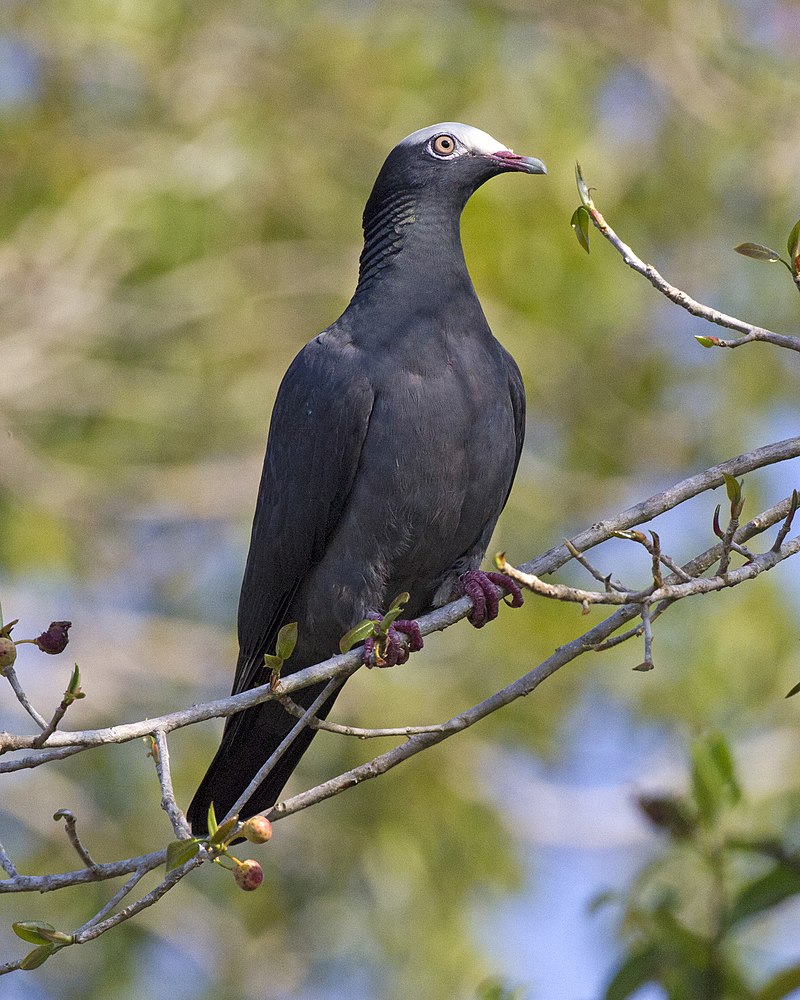
The White-crowned Pigeon is a species of bird belonging to the Columbidae family, widely found in the Caribbean. In the first half of the 18th century it was described as such.
This pigeon has been immortalized by artist John James Audubon through his watercolor painting featured in Birds of America published during early 19th century.
These birds primarily feed on fruits and seeds and have white crowns that make them easily recognizable even from afar.
The beauty of these birds makes them popular amongst birdwatchers all over the world who flock to observe their behavior while they eat or nest.Scientific classification:
| Kingdom | Animalia |
| Phylum | Chordata |
| Class | Aves |
| Order | Columbiformes |
| Family | Columbidae |
| Genus | Patagioenas |
| Species | P. leucocephala |
14. Green-Throated Carib
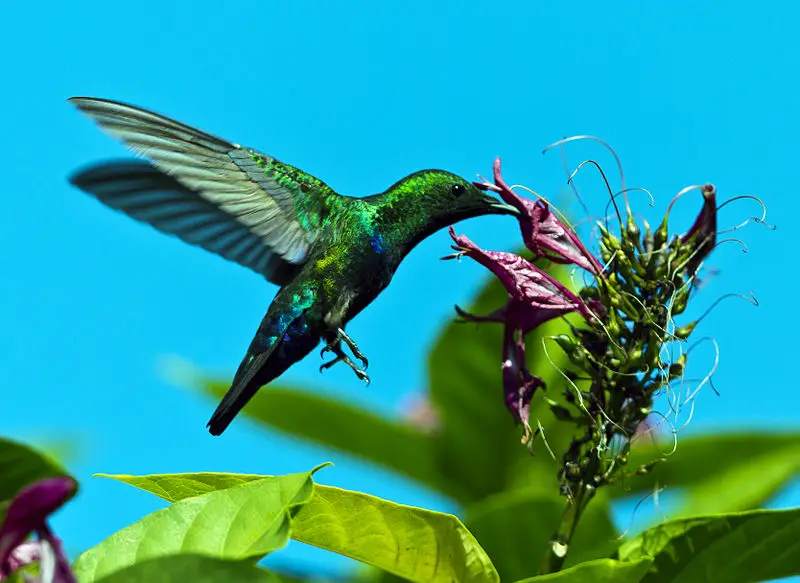
The Green-throated Carib is a species of hummingbird found in Puerto Rico and most of the Lesser Antilles. It was described by Swedish naturalist Carl Linnaeus in 1758.
The bird has distinctive green throat feathers, with iridescent blue on its back and wings. Its tail feathers are blackish brown at the base and white towards the tip, forming two distinct bands across their length.
This beautiful creature usually feeds on nectar from flowers or small insects such as spiders, bees and ants that it catches while flying through foliage.
Despite being fairly common throughout its range, this delightful little bird faces some threats due to habitat loss caused by human activity like agriculture or development projects taking place in areas where they live naturally.Scientific classification:
| Kingdom | Animalia |
| Phylum | Chordata |
| Class | Aves |
| Order | Apodiformes |
| Family | Trochilidae |
| Genus | Eulampis |
| Species | E. holosericeus |
15. Antillean Nighthawk
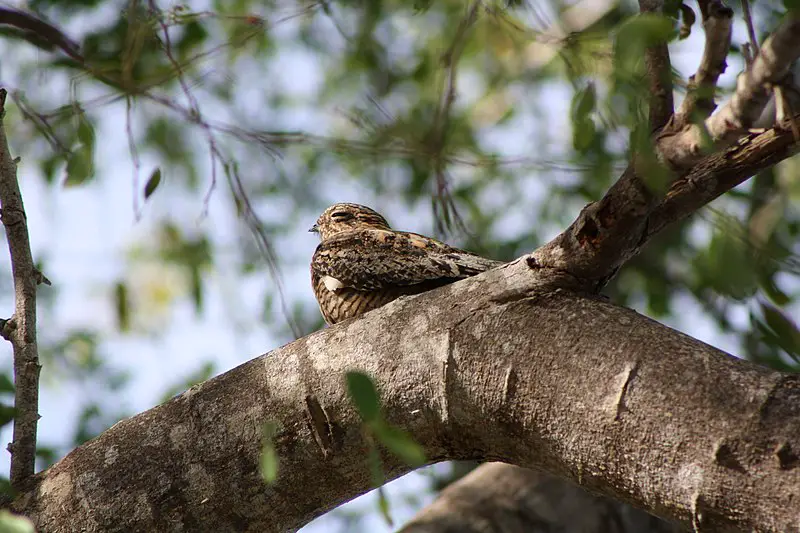
The Antillean nighthawk is an impressive nocturnal bird native to the Caribbean and Florida Keys.
It has a distinct colour scheme of dark brown, grey and white patterning on its upperparts and breast; long wings are black with a white bar visible in flight; tail dark with barring, while underparts are white with blackish-brown streaks.
Named after Cuban naturalist Juan Gundlach, these birds can be found near forest edges or open habitats like savannahs.
They feed primarily by hawking insects at night using their large eyes for good vision in low light conditions.
During breeding season they perform an aerial courtship display involving dives from altitude followed by steep climbs back up again as pairs circle each other doing tight circles around one another – truly spectacular.Scientific classification:
| Kingdom | Animalia |
| Phylum | Chordata |
| Class | Aves |
| Order | Caprimulgiformes |
| Family | Caprimulgidae |
| Genus | Chordeiles |
| Species | C. gundlachii |
16. Caribbean Elaenia
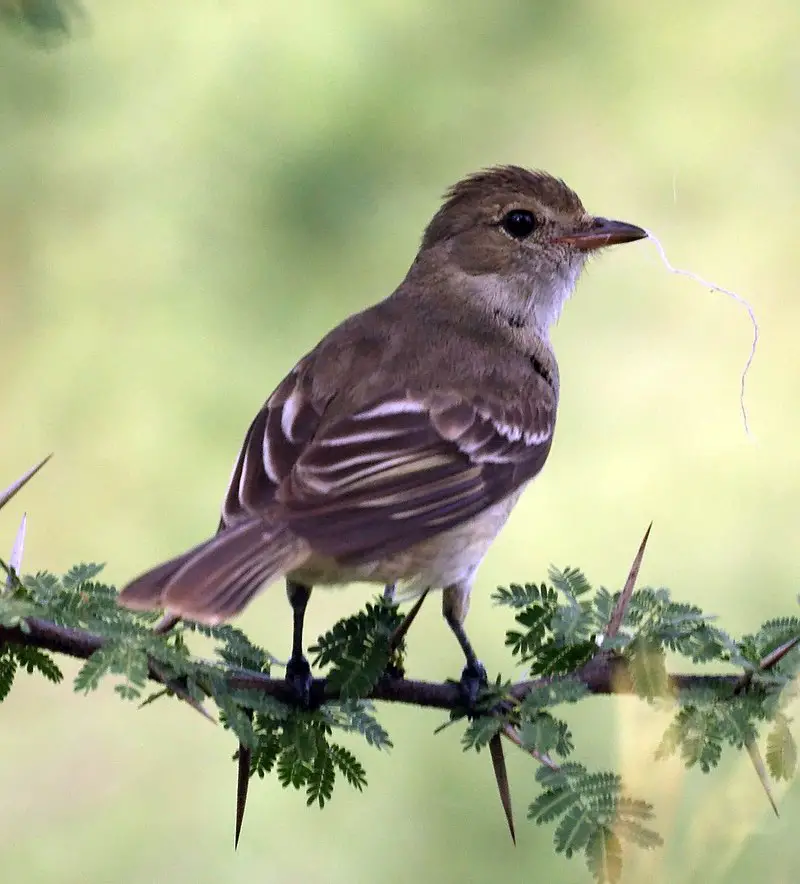
The Caribbean elaenia is a species of small bird that can be found in the West Indies and parts of Central America.
It is part of the Tyrannidae family and inhabits tropical dry broadleaf forests, subtropical or tropical moist lowland forests, as well as heavily degraded former forest areas.
In 1760, French zoologist Mathurin Jacques Brisson provided an extensive description on this species which has helped us gain further knowledge about it today.
The Caribbean elaenia typically measures around 6-9 inches long with predominantly olive green feathers with yellowish edges to some wings and tails.
They have white throats but lack any distinctive markings on their chest unlike many other birds from its family.
This bird feeds primarily on insects such as grasshoppers collected from trees or bushes while also consuming fruit when available during certain times of year.Scientific classification:
| Kingdom | Animalia |
| Phylum | Chordata |
| Class | Aves |
| Order | Passeriformes |
| Family | Tyrannidae |
| Genus | Elaenia |
| Species | E. martinica |
17. American Black Swift
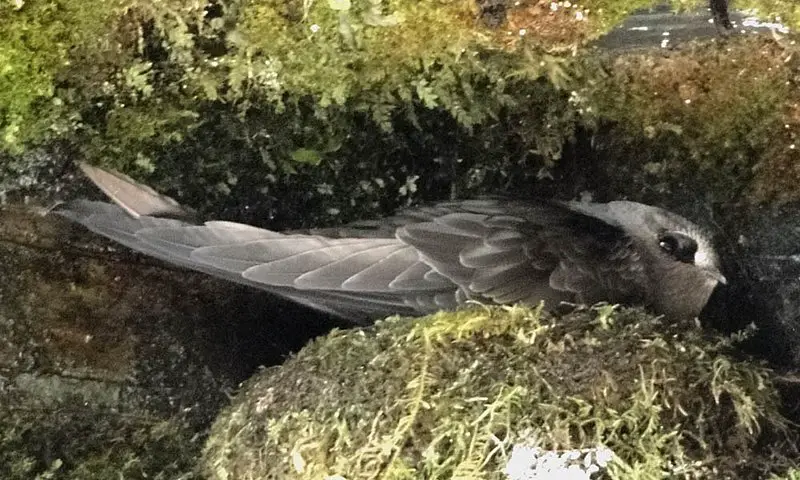
The American black swift is a species of bird that resides in North America, Central and South America as well as the Caribbean.
It was formally described by German naturalist Johann Friedrich Gmelin in 1789.
These birds prefer high mountain regions, living near fast-flowing streams or waterfalls with plenty of insects for food.
They have long wings which allow them to soar up on thermals and catch insects midair.
As their name suggests, they are almost entirely black with some lighter feathers around the neck area giving it an overall glossy look when seen from below.
Their breeding season takes place between May-August where both parents take part in caring for the young until they can fly independently after about 6 weeks old.Scientific classification:
| Kingdom | Animalia |
| Phylum | Chordata |
| Class | Aves |
| Order | Apodiformes |
| Family | Apodidae |
| Genus | Cypseloides |
| Species | C. niger |
18. Stilt Sandpiper
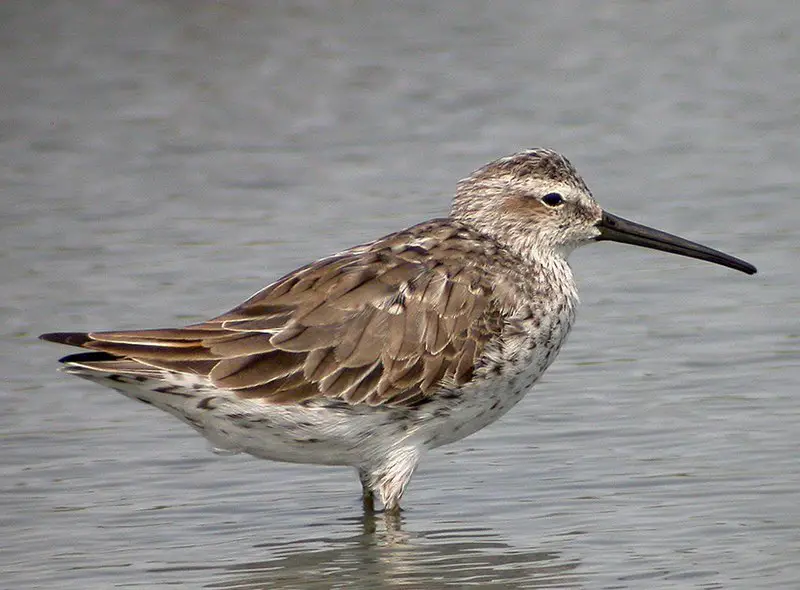
The Stilt Sandpiper (Calidris himantopus) is a small shorebird with ancient Greek origins. It has grey-coloured feathers, and its scientific name is derived from the terms “strap foot” or “thong foot”.
This bird bears some resemblance to smaller calidrid sandpipers, also known as ‘stints’. Through recent DNA sequence information, it was found that this species of birds are closely related to other wading shorebirds such as curlews and godwits.
They can usually be seen along the edges of rivers and creeks in shallow waters where they feed on aquatic insects like beetles, flies, mayflies etc., which makes them an important part of their ecosystem’s food chain.
The stilt sandpiper population appears to have been stable over time but further research needs to be done in order for us to understand more about this unique species.Scientific classification:
| Kingdom | Animalia |
| Phylum | Chordata |
| Class | Aves |
| Order | Charadriiformes |
| Family | Scolopacidae |
| Genus | Calidris |
| Species | C. himantopus |
19. Scaly-Breasted Thrasher
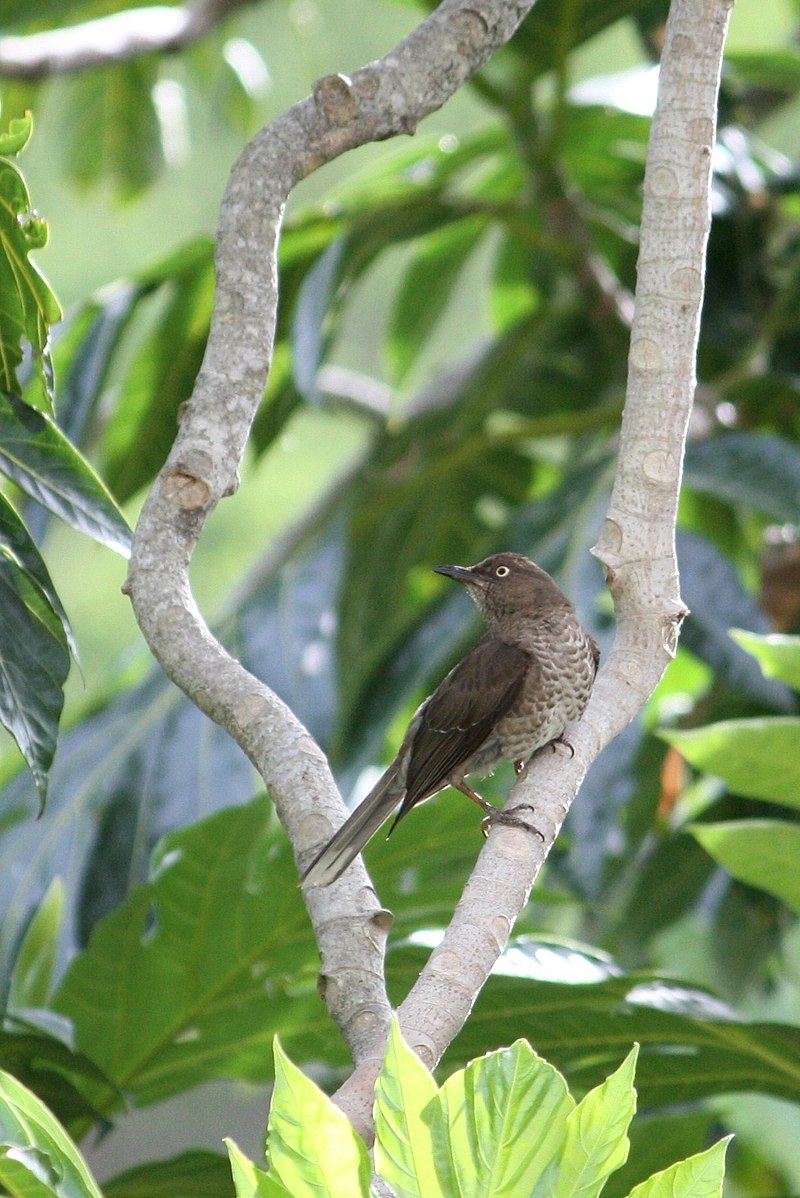
The Scaly-breasted Thrasher is a species of bird in the family Mimidae, found throughout much of the Lesser Antilles.
It has five subspecies and is approximately 23 cm long with greyish brown upperparts and black wings marked with white spots.
Its underparts are reddish orange to yellow buff, finely scaled or scalloped with darker edges, giving it its name.
This thrasher feeds mainly on insects but also eats fruits and berries as well as small lizards.
The male performs elaborate courtship displays which include soaring flights high into the air followed by singing from perches at the tops of trees or shrubs during breeding season between February – May period each year .
It typically nests low down in thickets near water sources such as rivers or streams using twigs bound together with spider web silk for nesting material , laying 2 to 3 eggs at one time.
The Scaly-breasted Thrashers are overall common birds that inhabit various habitats including mangroves, rainforests and dry scrublands across their range making them an important part of local ecosystems within their range.Scientific classification:
| Kingdom | Animalia |
| Phylum | Chordata |
| Class | Aves |
| Order | Passeriformes |
| Family | Mimidae |
| Genus | Allenia Cory, 1891 |
| Species | A. fusca |
20. Lesser Antillean Flycatcher
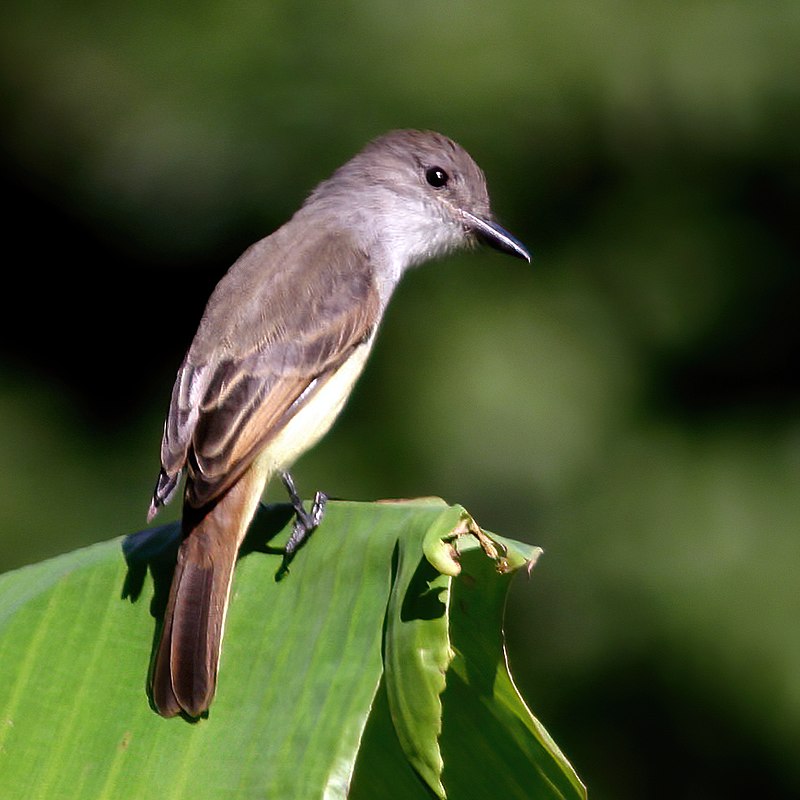
The Lesser Antillean flycatcher is a species of bird found in the Caribbean region. It belongs to the family Tyrannidae and inhabits subtropical or tropical moist lowland forests.
This small songbird has long wings, rounded heads, and short bills with distinct dark markings on its upperparts. Its diet consists mostly of insects which it catches by flying around branches and foliage looking for prey.
The Lesser Antillean flycatcher also builds its nest near tree trunks using twigs, leaves, feathers, grasses and bark strips as materials for construction.
Despite being widely distributed across several islands in the Caribbean Sea this species is considered vulnerable due largely to habitat destruction caused by human activities such as logging and urbanization throughout their range area.Scientific classification:
| Kingdom | Animalia |
| Phylum | Chordata |
| Class | Aves |
| Order | Passeriformes |
| Family | Tyrannidae |
| Genus | Myiarchus |
| Species | M. oberi |
21. Carib Grackle
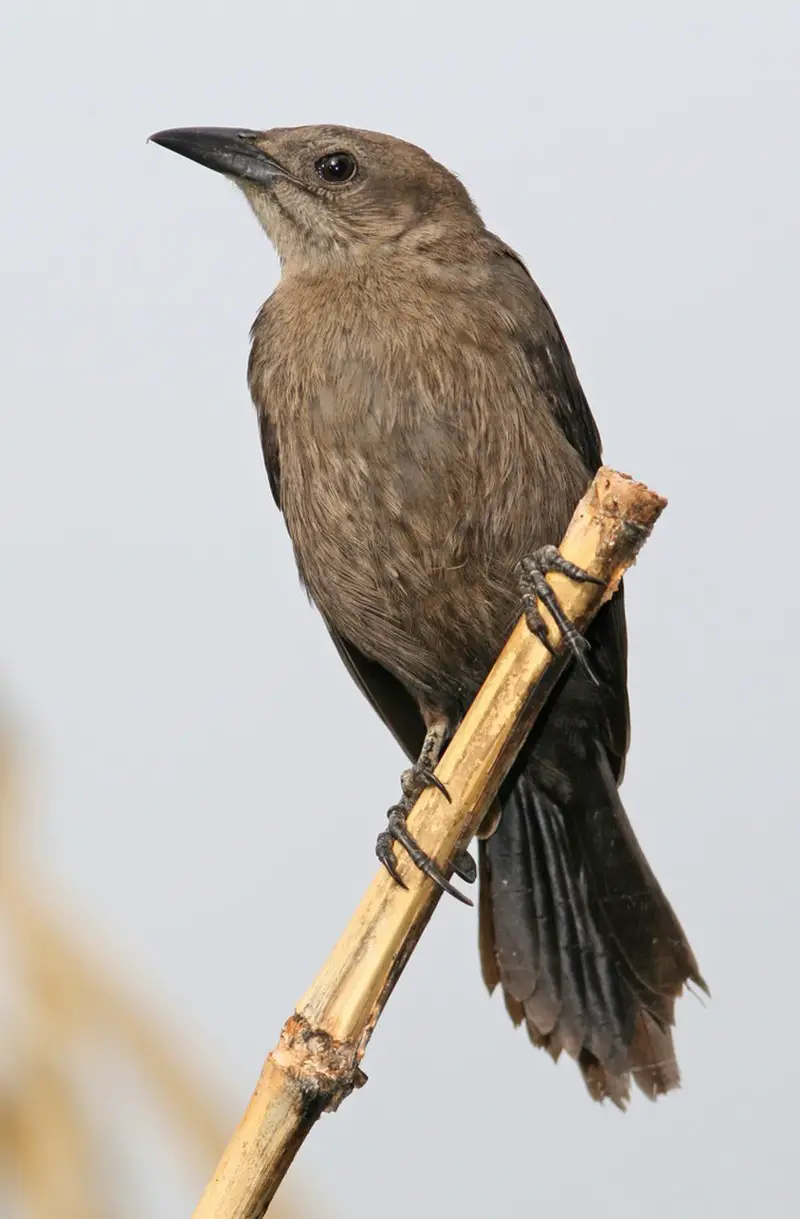
The Carib grackle is a tropical blackbird found in the Lesser Antilles and northern South America. It has eight subspecies, with the most widespread being Q. l. lugubris which can be found on Trinidad and much of mainland South America.
This particular subspecies was introduced to Puerto Rico during the 19th century where it now thrives due to its adaptability and tolerance towards human activity such as living near grazing animals or around farms.
Its diet consists mainly of small invertebrates, fruits, seeds and grains – all readily available in populated areas making it ideal for urban environments too.
They are also known for their beautiful songs used by males during breeding season to attract females but unfortunately this doesn’t last long as they generally only mate once throughout life before moving onto find another partner shortly after nesting season ends.Scientific classification:
| Kingdom | Animalia |
| Phylum | Chordata |
| Class | Aves |
| Order | Passeriformes |
| Family | Icteridae |
| Genus | Quiscalus |
| Species | Q. lugubris |
22. Caribbean Martin
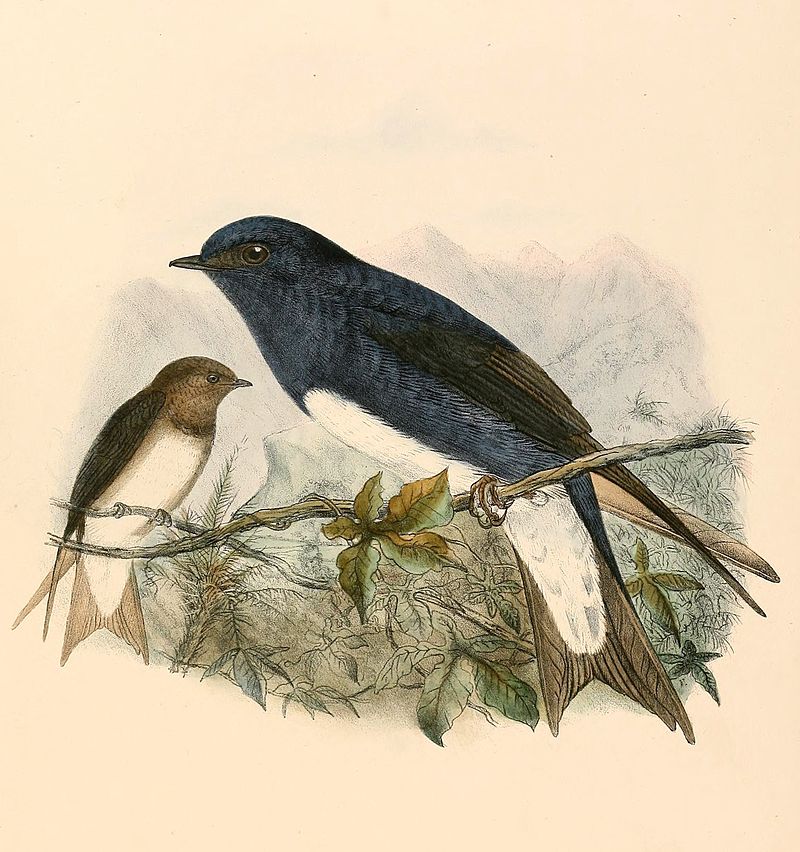
The Caribbean martin is a large swallow that can be found throughout the Caribbean, except on Cuba and Isla de la Juventud.
It has at various times been thought to be related to the purple martin but more recently it has been recognised as its own species – Progne dominicensis.
This species is closely related to both the Cuban martin (P. cryptoleuca) and South American martins (S. chirica).
The adult birds have predominantly white underparts with grey-brown upper parts and black wings.
Their tail feathers are forked in shape making them very distinctive when flying through their habitats of open woodlands, savannas or mangroves near bodies of water such as lakes or rivers where they feed mainly on insects like dragonflies or termites.Scientific classification:
| Kingdom | Animalia |
| Phylum | Chordata |
| Class | Aves |
| Order | Passeriformes |
| Family | Hirundinidae |
| Genus | Progne |
| Species | P. dominicensis |
23. Audubon’s Shearwater
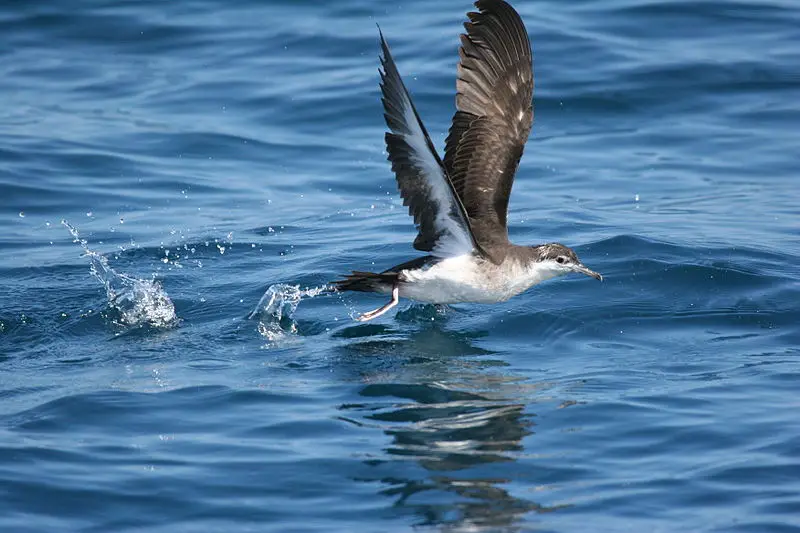
Audubon’s shearwater is a type of seabird belonging to the petrel family. It has many different monikers, including Baillon’s shearwater, tropical shearwater, Bannerman’s shearwater, Mascarene shearwater and Persian Sheawater.
This species was first discovered by French naturalist F�lix Louis L’Herminier in 1836 and earned its scientific name (Puffinus lherminieri) in his honour.
These birds are found throughout tropical oceans across the world from Africa to Asia and even Hawaii.
They have dark brown back feathers with white bellies which help them blend into their environment for protection against predators.
Audubon�s Sheerwaters feed on small fish near ocean surfaces or dive deep underwater when necessary due to their strong wings allowing them excellent swimming capabilities through powerful winds at sea level as well as incredible endurance during long distance flights over vast areas of open water around islands or coastlines.Scientific classification:
| Kingdom | Animalia |
| Phylum | Chordata |
| Class | Aves |
| Order | Procellariiformes |
| Family | Procellariidae |
| Genus | Puffinus |
| Species | P. lherminieri |
24. Black-Faced Grassquit
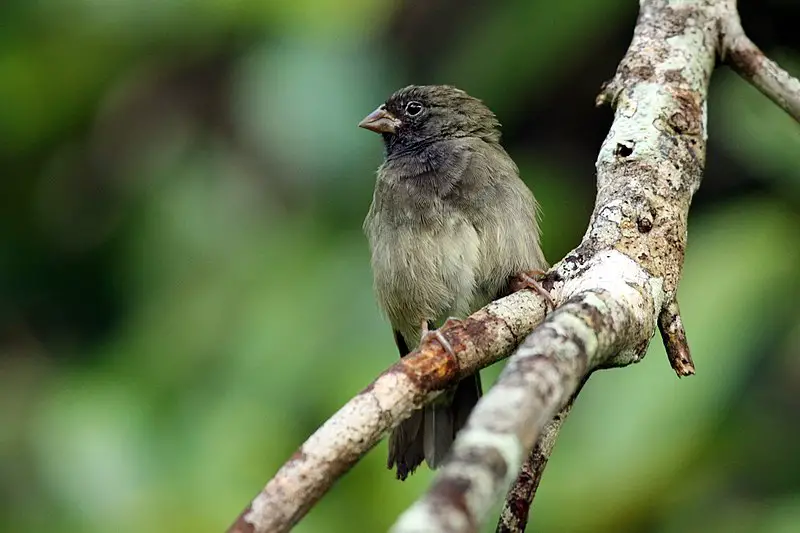
The Black-faced grassquit is a small bird belonging to the tanager family, genetically related to Darwin’s finches. It breeds mainly in the West Indies and along certain parts of Colombia and Venezuela.
The Swedish naturalist Carl Linnaeus first formally described it back in 1766 as part of his twelfth edition work on species classification.
This type of bird has a black head with white spots around its eyes, grey wings and tail feathers; its body is brownish orange or yellow with darker shades towards the belly area.
Its diet consists mostly of seeds from grasses but may also include other insects for additional nutrition during breeding season.Scientific classification:
| Kingdom | Animalia |
| Phylum | Chordata |
| Class | Aves |
| Order | Passeriformes |
| Family | Thraupidae |
| Genus | Melanospiza |
| Species | M. bicolor |
25. Clapper Rail
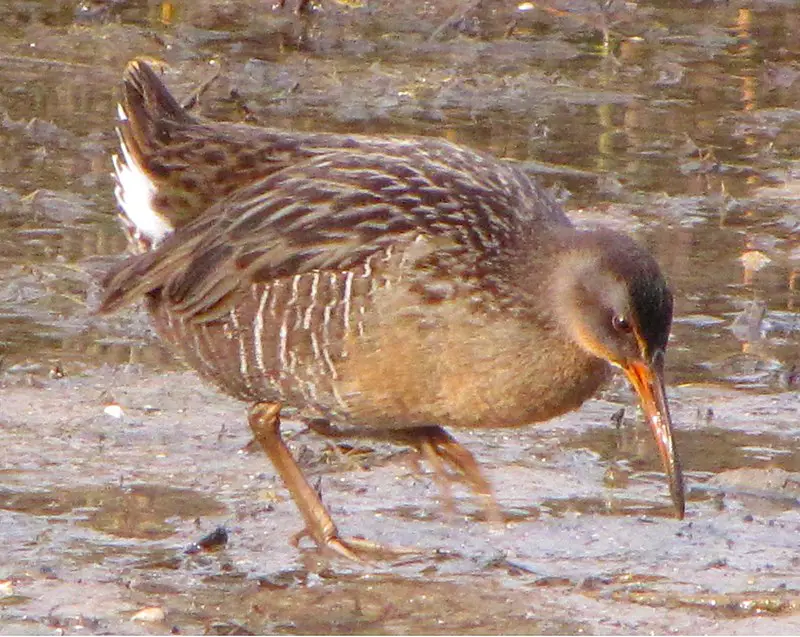
The Clapper Rail is a large, brown bird that belongs to the Rallidae family. It is found in wetlands along the eastern coast of America, Mexico and some Caribbean Islands.
This species was once considered to be related to Mangrove Rails but recent taxonomic studies have shown otherwise.
They are quite vocal with their loud calls which sound like someone clapping two stones together hence its name ‘Clapper’.
These birds feed on small crabs, fishes and insects in coastal marshes and swamps making them an important part of wetland ecosystems.
In order for these birds to thrive actions should be taken by governments such as restoring habitats or creating new ones so they can carry out their activities without any disturbance from humans or predators.Scientific classification:
| Kingdom | Animalia |
| Phylum | Chordata |
| Class | Aves |
| Order | Gruiformes |
| Family | Rallidae |
| Genus | Rallus |
| Species | R. crepitans |
Also Featured In: Birds You’ll Find in South Texas , Long Island Birds You Should Know
26. White-Collared Swift
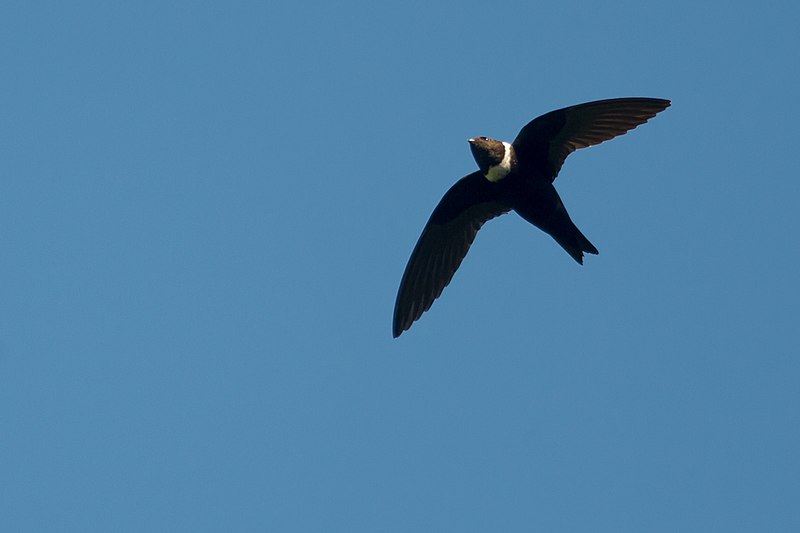
The White-collared Swift is a species of bird belonging to the subfamily Cypseloidinae in the swift family Apodidae.
It can be found throughout Mexico, Central and South America, as well as some Caribbean islands like Trinidad and the Antilles.
This unique avian stands out from other swifts due its size; it is larger than most others in its range.
There are nine recognized subspecies that vary by geographical location and other morphological features such as tail length or wing shape.
The white-collared swift feeds mainly on flying insects which it catches midair using their wide wingspan for stability while swooping through the sky at high speeds over forests, mountainsides or open areas near bodies of water.
They usually roost together during nighttime hours but migrate long distances depending on seasonality changes in temperature and food availability.Scientific classification:
| Kingdom | Animalia |
| Phylum | Chordata |
| Class | Aves |
| Order | Apodiformes |
| Family | Apodidae |
| Genus | Streptoprocne |
| Species | S. zonaris |
27. Ruddy Quail-Dove
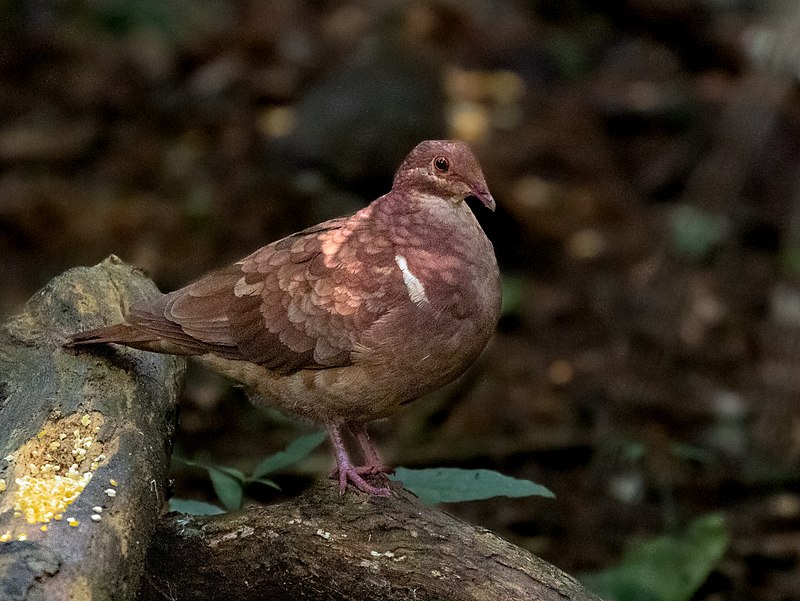
The Ruddy Quail-Dove is a beautiful bird native to the West Indies, Central and South America. It has a reddish brown plumage with dark spots on the wings and neck that give it an attractive appearance.
Its size ranges from 19–28 cm in length. The dove builds its nest either on shrubs or sometimes directly on the ground, laying two buff-colored eggs as part of their breeding cycle.
In recent years, there have been sightings of this species as far north as Florida and Texas proving just how resilient these birds are.
They feed mainly upon fruits found in woodland areas but also consume small invertebrates at times too.
All in all, this stunningly colored creature makes for an amazing addition to any environment they inhabit.Scientific classification:
| Kingdom | Animalia |
| Phylum | Chordata |
| Class | Aves |
| Order | Columbiformes |
| Family | Columbidae |
| Genus | Geotrygon |
| Species | G. montana |
28. Pelicans

Pelicans are a family of birds within the pelecani order, with two genera: Eopelecanus (extinct) and Pelecanus (still existing). They have been around since the late Eocene period — over 40 million years ago.
Pelicans are large waterbirds that can be found in both temperate and tropical regions all over the world.
Their most distinctive feature is their enormous pouched bills; they use these to scoop up fish from rivers or lakes as part of their diet.
These majestic creatures come in various colors, including white, grey, black and browns. When flying in formation they look like an arrow pointing towards its destination.
Pelicans usually live near bodies of water but may also migrate long distances when food resources become scarce during winter months.Scientific classification:
| Kingdom | Animalia |
| Phylum | Chordata |
| Class | Aves |
| Order | Pelecaniformes |
| Family | Pelecanidae Rafinesque, 1815 |
29. Greater Antillean Bullfinch
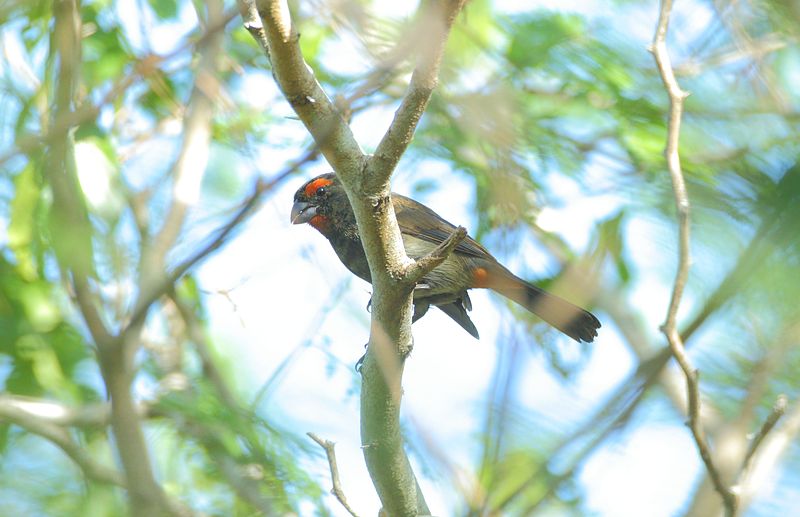
The Greater Antillean Bullfinch is a species of bird in the Thraupidae family. It can be found across many places, like the Bahamas, Hispaniola (Dominican Republic and Haiti), Jamaica, and Turks & Caicos Islands.
This beautiful bird prefers to inhabit subtropical or tropical dry forests as well as moist lowland/montane forests.
Its main features are its bright yellow bill with pink gape flange, olive green upperparts while underparts have grey tinge on them along with some white markings near breast area.
All these characteristics help it stand out from other birds living in similar habitats.Scientific classification:
| Kingdom | Animalia |
| Phylum | Chordata |
| Class | Aves |
| Order | Passeriformes |
| Family | Thraupidae |
| Genus | Melopyrrha |
| Species | M. violacea |